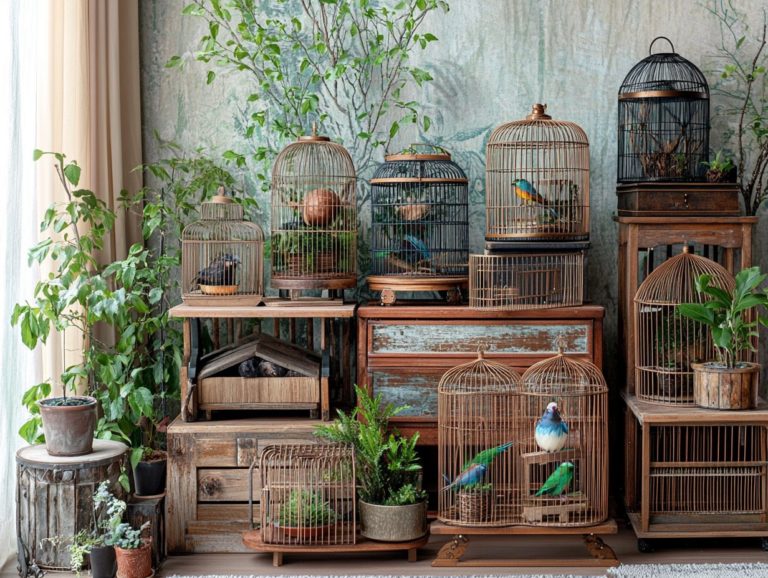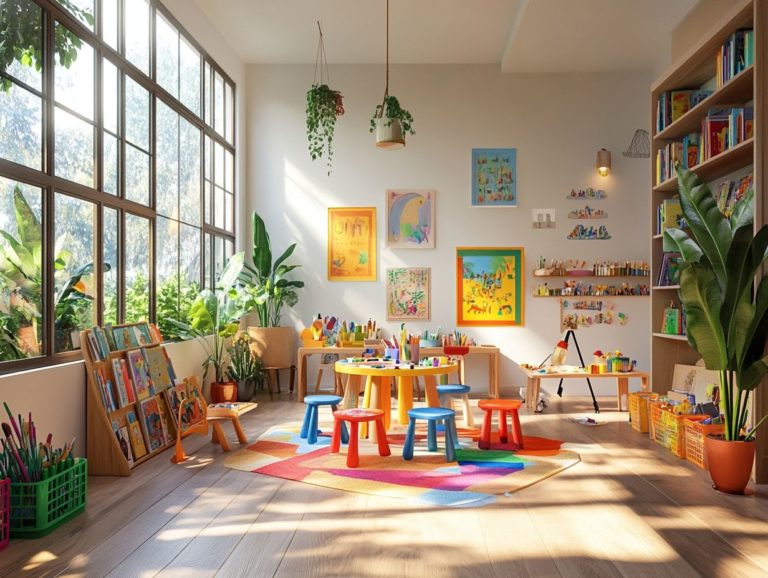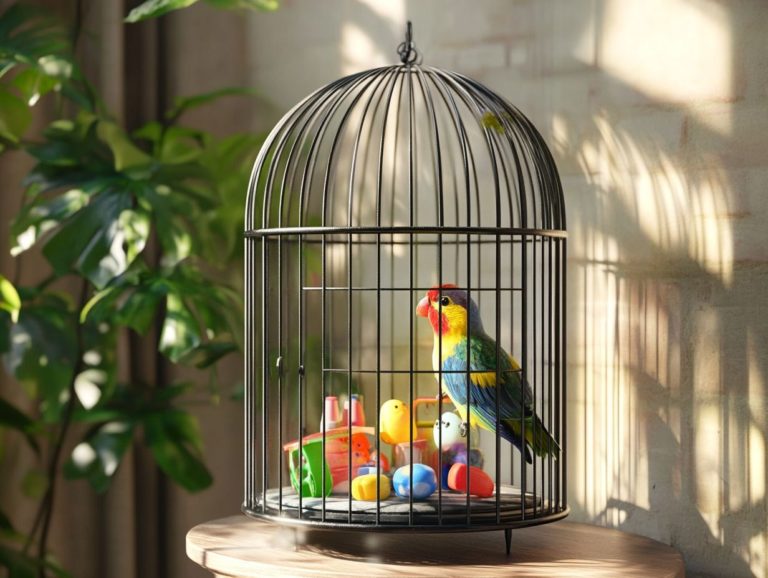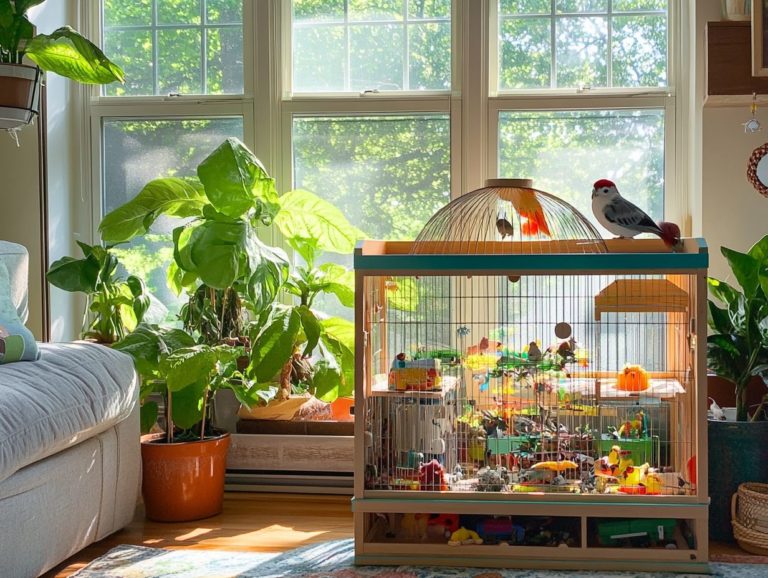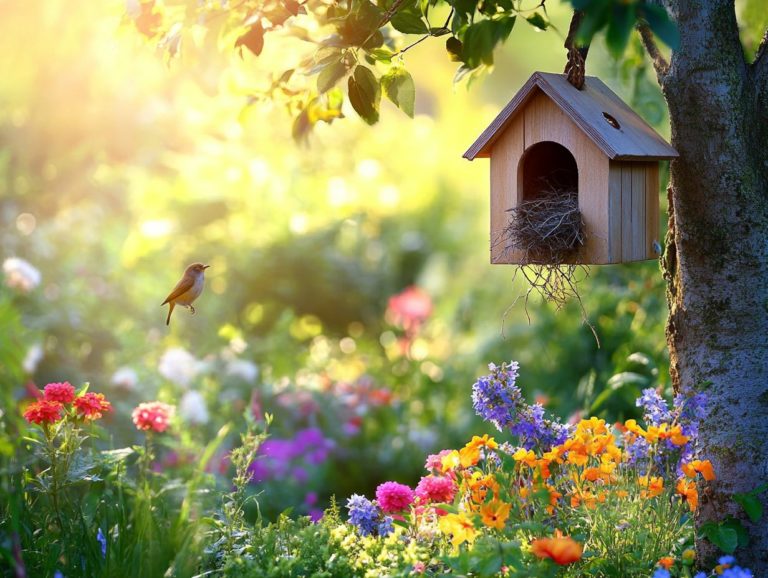How to Set Up the Perfect Bird Aviary
Creating the perfect bird aviary is a rewarding endeavor that brings joy to you and your feathered companions. From selecting the ideal location to crafting a comfortable environment, every decision plays a crucial role in ensuring your birds thrive.
This guide covers essential factors such as materials, design, must-have features, and proper care routines. It also highlights common pitfalls to avoid, ensuring that your aviary becomes a safe haven for your beloved birds.
Let s dive in!
Contents
- Key Takeaways:
- Choosing the Right Location for Your Bird Aviary
- Materials and Design for Your Bird Aviary
- Crucial Design Tips for Your Bird Aviary
- Essential Features for Your Bird Aviary
- Caring for Your Birds in the Aviary
- Common Mistakes to Avoid
- Frequently Asked Questions
- What safety measures should I consider when setting up my bird aviary, especially in an outdoor aviary?
- What are the essential components of a perfect bird aviary?
- How can I create a stimulating and enriching environment in my bird aviary?
- What type of bedding should I use in my bird aviary?
- How often should I clean and maintain my bird aviary?
- What are some signs that my bird aviary is not suitable for my birds?
Key Takeaways:
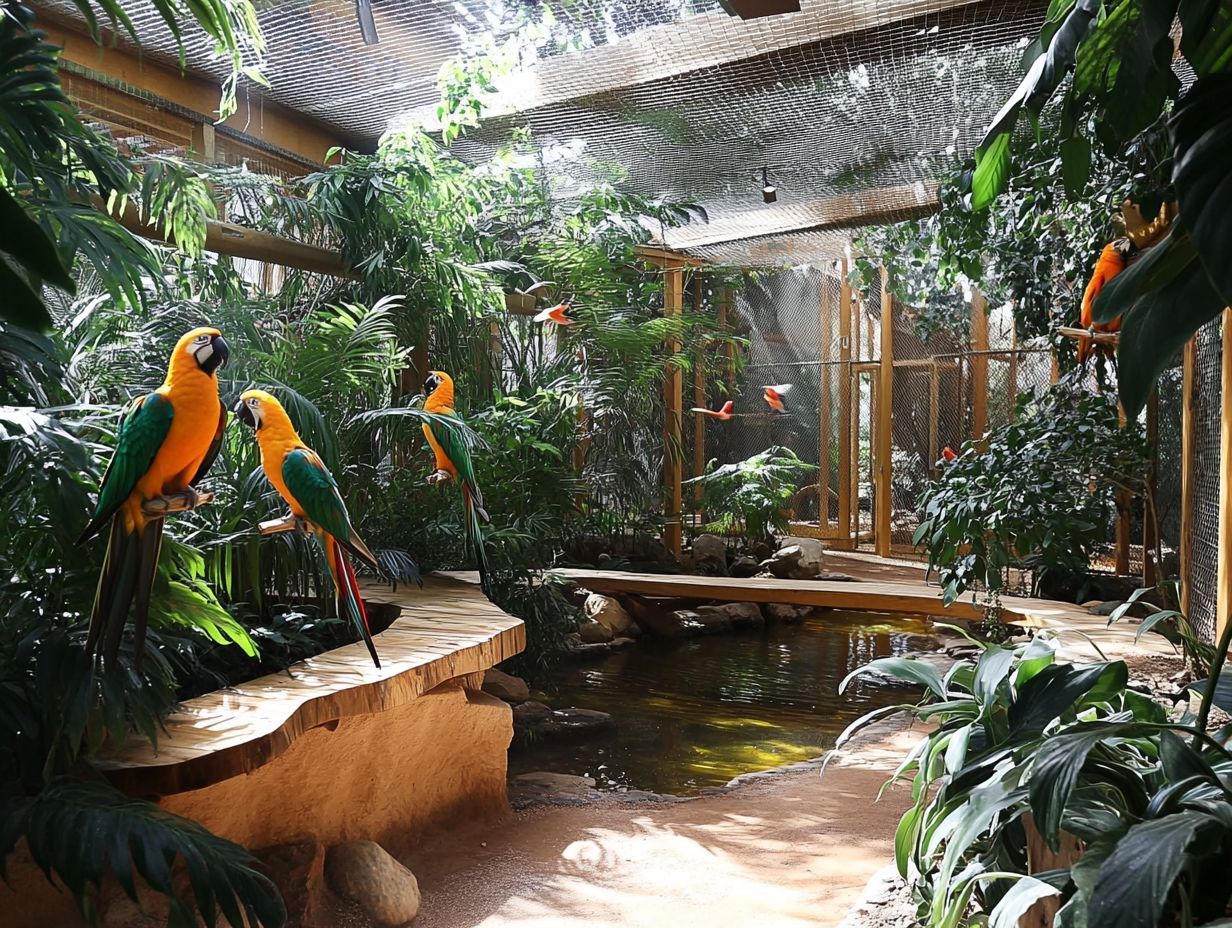
- Choose a suitable location for your bird aviary by considering factors like sunlight, temperature, and protection from predators.
- Use high-quality materials, such as wire mesh and concrete, and consider design elements like ventilation and size to create a safe home for your birds.
- Provide essential features like perches, nesting areas, and feeding stations to promote your birds’ well-being in the aviary.
Choosing the Right Location for Your Bird Aviary
Choosing the right spot is key to your birds’ happiness make it count!
Whether you decide on an outdoor or indoor aviary, consider factors like natural habitat, bird safety, sunlight exposure, and temperature control.
The right placement creates an environment where your birds thrive and offers you a pleasant space for birdwatching and play.
Factors to Consider
When selecting the location for your aviary, several factors come into play. Consider the compatibility of species, the outdoor space available, and the necessity of temperature control for your birds comfort.
Keeping out pests is crucial, as these threats can jeopardize your birds’ health. Create a secure environment through proper enclosures and regular maintenance, ensuring peace of mind.
Temperature fluctuations can impact your birds behavior and well-being. Extreme heat or cold can lead to stress or illness. Choose a location that meets your spatial needs and offers climate stability.
Materials and Design for Your Bird Aviary
The materials and design you select are crucial for the safety and comfort of your feathered friends while enhancing your space’s aesthetic appeal.
To achieve the best aviary design, choose durable construction materials like wire mesh and foundation elements. Thoughtful features, such as a sliding door and non-toxic paint, enhance functionality and ensure a bird-friendly environment.
Choosing the Best Materials
Choosing the right materials is vital for creating a safe and comfortable haven. Options include robust wire mesh, concrete, and the visually appealing charm of wood.
The materials you select impact the aviary’s structural integrity and the well-being of its residents. Sturdy wire mesh is excellent for larger, active bird species, providing security and ventilation.
Wood provides a natural look that many find appealing; however, it may require upkeep to prevent decay, especially in humid environments. While concrete structures are robust and require minimal maintenance, they might lack the warmth smaller birds prefer.
Understanding the unique needs of different bird species is essential when making material choices. This approach ensures your aviary thrives under various conditions, creating a nurturing space for its inhabitants.
Your perfect aviary awaits let s get started on creating a safe haven for your birds!
Crucial Design Tips for Your Bird Aviary
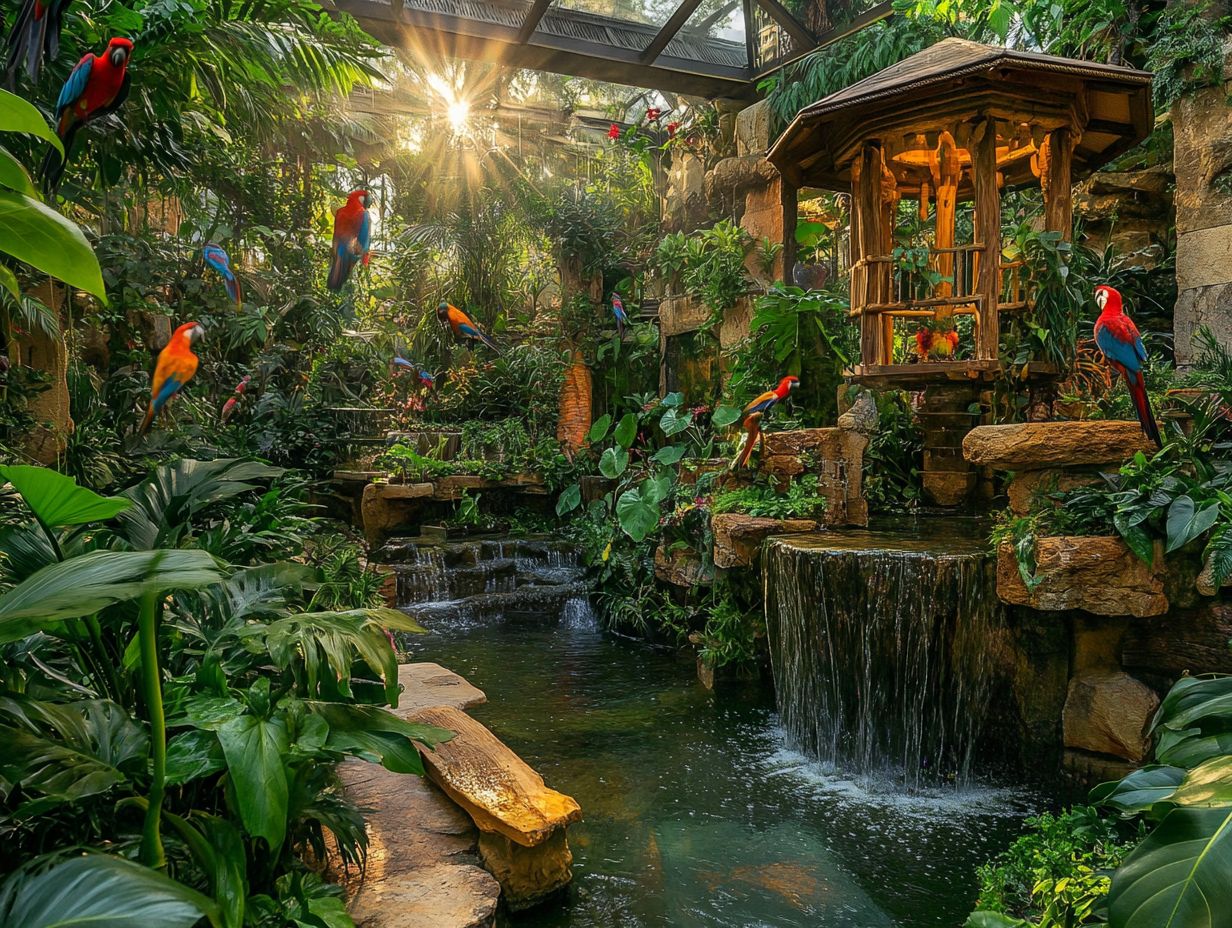
When designing your bird aviary, it’s crucial to incorporate key elements like perches, climbing areas, and proper ventilation that mimic a natural habitat. These features promote the well-being of your birds and encourage their activity.
By integrating perches at various heights, you foster social interactions and provide a sense of safety, both vital for their mental health.
Climbing areas made from natural branches inspire exploration and physical exercise, encouraging essential behaviors and helping to stave off boredom.
Effective ventilation is equally important to keep the air fresh and cool, ensuring a steady supply of fresh air and reducing humidity, which can lead to respiratory issues.
Collectively, these thoughtfully designed features create an environment that meets not just the physical needs of your birds but also enhances their overall quality of life.
Essential Features for Your Bird Aviary
An aviary crafted for the well-being of birds should encompass essential elements like perches, engaging toys, cozy nesting areas, designated feeding zones, and perhaps even a delightful water feature. Including aviary plants closely replicates their natural habitat.
This design boosts their quality of life and helps them feel safe and comfortable in their surroundings.
Perches and Toys
Providing adequate perches and toys in your aviary is essential for stimulating the physical and mental health of your birds. This caters to the diverse needs of various compatible species that thrive on climbing and playing.
Each bird species has its own unique requirements. For example, lively parakeets and tranquil finches have different habitat needs.
Larger parrots flourish with sturdy, rugged perches made from natural wood, which also helps maintain their beaks. Engaging toys think ropes, bells, and foraging devices keep them entertained and encourage essential natural behaviors.
Smaller birds, like canaries, prefer soft materials and gentle swings that provide a sense of security while promoting activity. By thoughtfully selecting perches and interactive toys tailored to each species, you can significantly enhance their quality of life.
This creates an environment where exercise and mental engagement weave seamlessly into their daily routine.
Nesting Areas
Creating appropriate nesting areas within your aviary is essential if you intend to house breeding pairs. These spaces significantly influence bird care and successful reproduction.
Nesting areas serve as sanctuaries for laying eggs and play a critical role in encouraging natural breeding behaviors.
To ensure these zones cater to the specific needs of the birds, consider the unique requirements of the species you are housing; different birds often prefer various materials and designs.
By incorporating natural elements like twigs and leaves, you stimulate instinctive nesting behaviors and provide a comforting sense of security.
Don’t miss the chance to create a safe haven for your birds! Regular maintenance of these areas cleaning and inspecting for potential hazards is paramount for their well-being.
A thoughtfully designed environment enhances the happiness and health of your birds, ultimately leading to more successful breeding outcomes.
Feeding and Watering Stations
Designing effective feeding and watering stations in your aviary is crucial for providing balanced nutrition and ensuring proper hydration. Don’t forget to consider drainage systems that help remove excess water to keep areas clean and dry.
This process requires an understanding of the specific dietary needs of various bird species, as each has its own preferences for seeds, fruits, or pellets.
For example, seed-eating birds thrive with hanging feeders that minimize waste, while nectarivorous species flourish with sugar-water dispensers.
To keep these stations hygienic, it’s important to select easy-to-clean materials and ensure that drainage systems effectively prevent water from pooling, which can encourage bacterial growth.
Regular maintenance not only supports the health of your birds but also encourages frequent visits, cultivating a vibrant avian community.
Start designing your aviary today for a happier, healthier bird family!
Caring for Your Birds in the Aviary
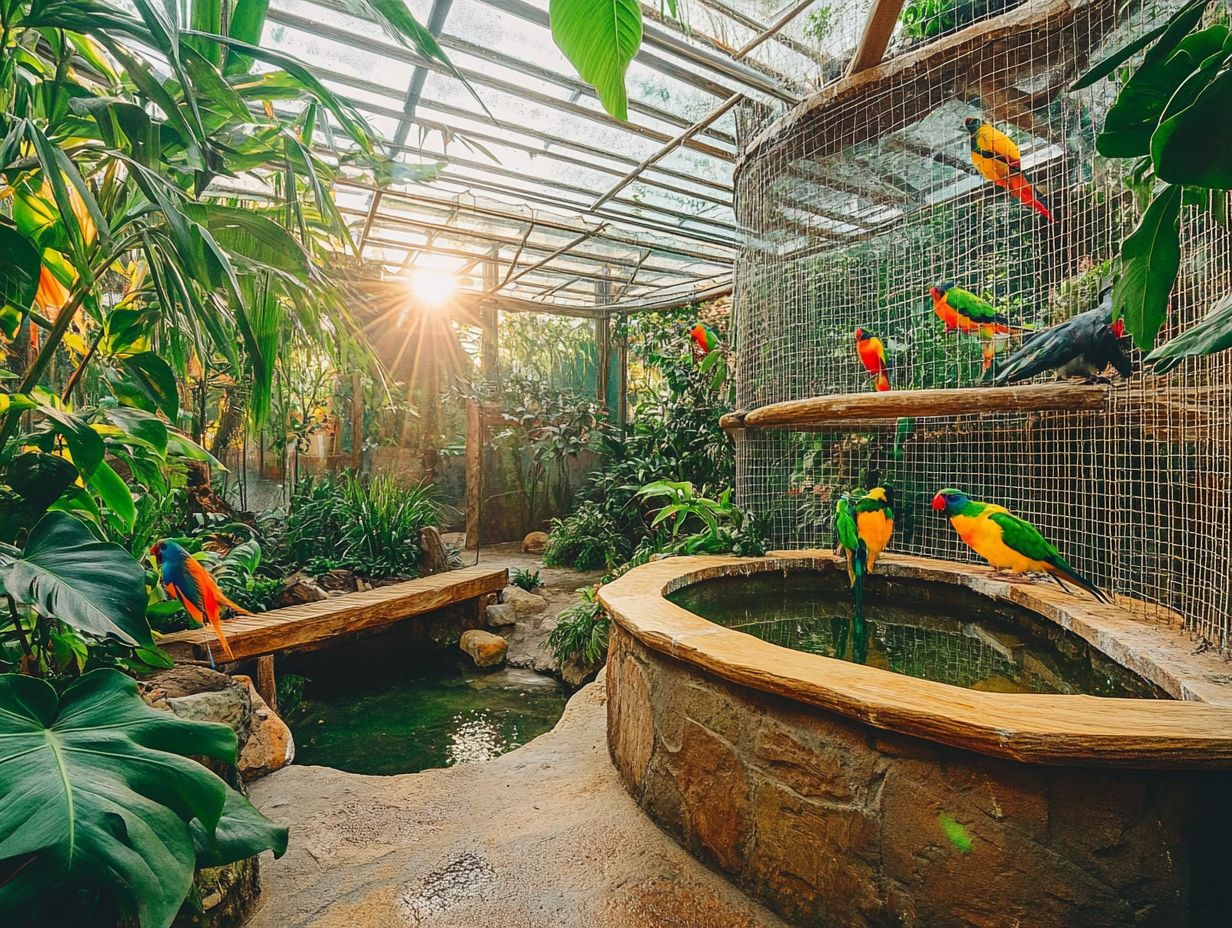
Caring for your birds in the aviary requires keen attention to their feeding and hydration needs. It s equally important to implement diligent cleaning and maintenance practices, which not only foster excellent bird care but also create a healthy environment especially crucial for breeding pairs.
Feeding and Hydration
Understanding what your birds need to eat is essential for establishing effective feeding and hydration practices tailored to their specific needs in designated feeding areas, especially regarding food for birds.
Birds, much like any other beloved pets, have diverse dietary preferences that vary significantly across species. For example, seed-eating birds such as finches thrive on a diet abundant in sunflower seeds and millet. In contrast, nectar-feeding species like hummingbirds rely on a sugar-water solution to satisfy their energy needs. Larger birds, such as parrots, flourish with a well-balanced combination of pellets, fruits, and vegetables that support their vitamin and mineral intake.
Hydration is equally critical, as birds may not always drink enough water on their own. By providing fresh, clean water alongside moisture-rich fruits and vegetables, you ensure they remain properly hydrated, enhancing their overall health and vitality.
Cleaning and Maintenance
Keep your aviary sparkling clean to keep your birds happy and healthy! Regular cleaning and maintenance are essential for ensuring both the safety of your birds and their overall health. This includes everything from floor cleaning to rodent prevention and following key maintenance tips.
Creating a clean environment means regular cleaning, not just occasional tidying. By regularly disinfecting surfaces, you can significantly reduce the risk of bird diseases that could harm your feathered companions.
Pay particular attention to corners and hidden spots where droppings tend to accumulate, as these areas can attract pests, especially rodents. Implementing barriers, such as metal screens, can effectively deter these unwelcome visitors while still allowing for proper airflow. Routine inspections are crucial for spotting early signs of wear or damage to the aviary structure.
By adhering to these best practices, you not only ensure a safer habitat but also foster vibrant health within your aviary population.
Common Mistakes to Avoid
Avoiding common mistakes in aviary construction and management is crucial for ensuring the safety of your aviary. Pay careful attention to the needs of compatible bird species, maintain proper temperature control, and commit to appropriate cleaning and maintenance practices.
Neglecting these aspects can compromise not only the well-being of your birds but also the overall integrity of your aviary.
Ensuring Safety and Comfort for Your Birds
Ensuring the safety and comfort of your birds requires you to create a bird-friendly environment. This means paying attention to compatible species, implementing effective rodent prevention strategies, and prioritizing overall aviary safety.
Design your aviary with ample space for flight, comfortable perches, and hiding spots that mimic their natural habitats. Selecting bird species that thrive together helps cultivate a peaceful community, minimizing stress and aggression among your feathered friends.
Routine inspections for signs of pests, utilizing natural deterrents, and securing the aviary against potential threats are essential preventive measures. By incorporating suitable plants that offer both aesthetic charm and shelter, you can significantly enhance the well-being of your birds, ensuring they enjoy a happy and fulfilling life in a safe environment.
Frequently Asked Questions
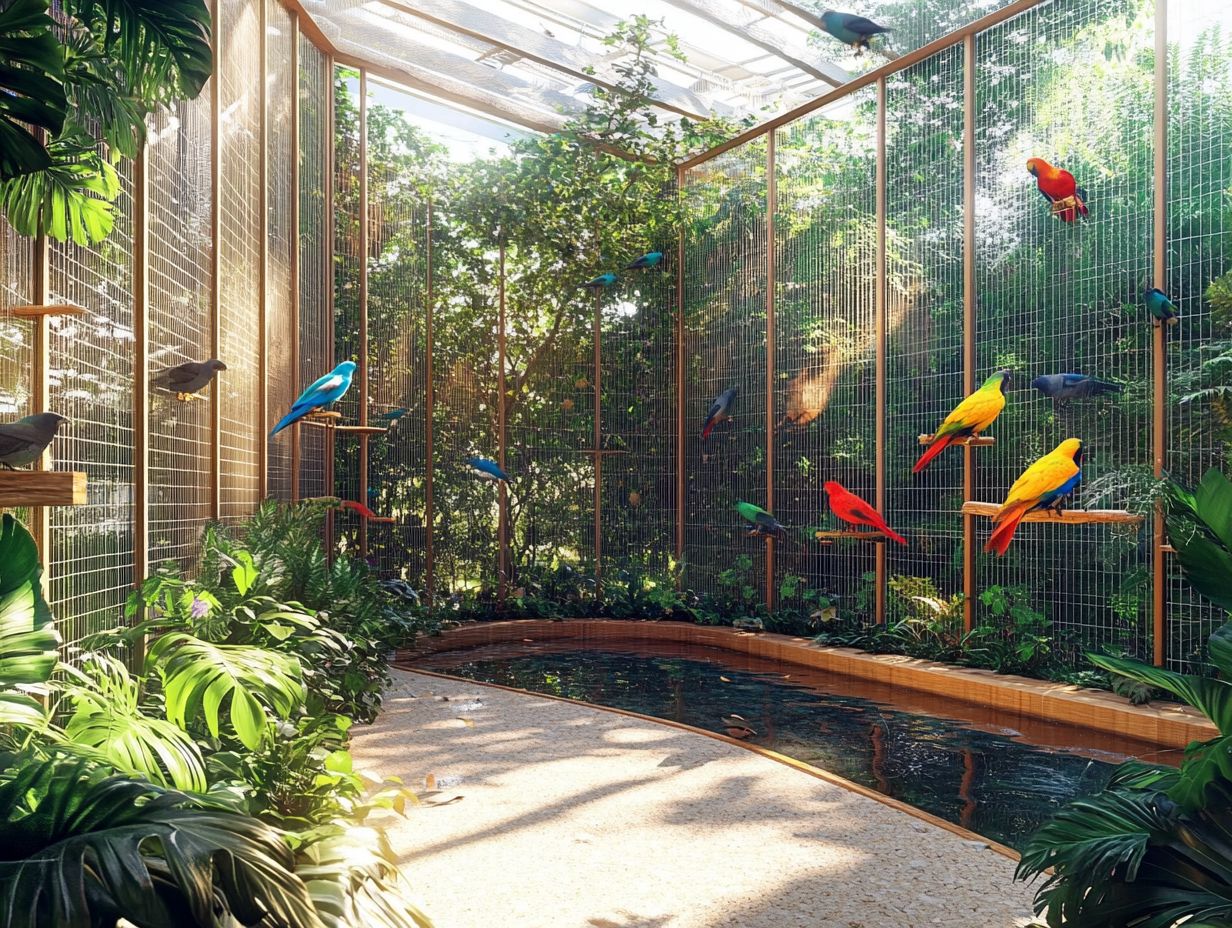
Start today to create the perfect home for your feathered friends!
What safety measures should I consider when setting up my bird aviary, especially in an outdoor aviary?
When setting up your bird aviary, safety is key. Ensure the structure is sturdy, with no sharp edges, and use non-toxic materials. For more guidance, check out these top 10 tips for bird cage setup.
Place the aviary away from hazards like electrical wires and poisonous plants.
What are the essential components of a perfect bird aviary?
A perfect bird aviary has enough space for your birds to move freely and exercise. Include places to rest, a variety of toys, and sources for food and water.
Proper ventilation and natural light are also crucial for a healthy environment.
How can I create a stimulating and enriching environment in my bird aviary?
Create engagement by adding toys like swings and puzzles. Natural elements like branches and plants will give your birds a chance to explore their space.
What type of bedding should I use in my bird aviary?
Use natural and non-toxic bedding like shredded paper, wood shavings, or sand. Avoid newspaper or cat litter, as these can harm your birds.
How often should I clean and maintain my bird aviary?
Regular maintenance is vital for your birds’ health. Daily tasks include spot cleaning and refilling food and water.
Perform a deep clean at least once a week and regularly check for damage or wear.
What are some signs that my bird aviary is not suitable for my birds?
If your birds are restless or showing signs of stress, your aviary may not be right for them. Look for signs like feather plucking, poor health, or loss of appetite.
Check the temperature control and ensure there s enough space. Consult a veterinarian if you notice concerning changes.

